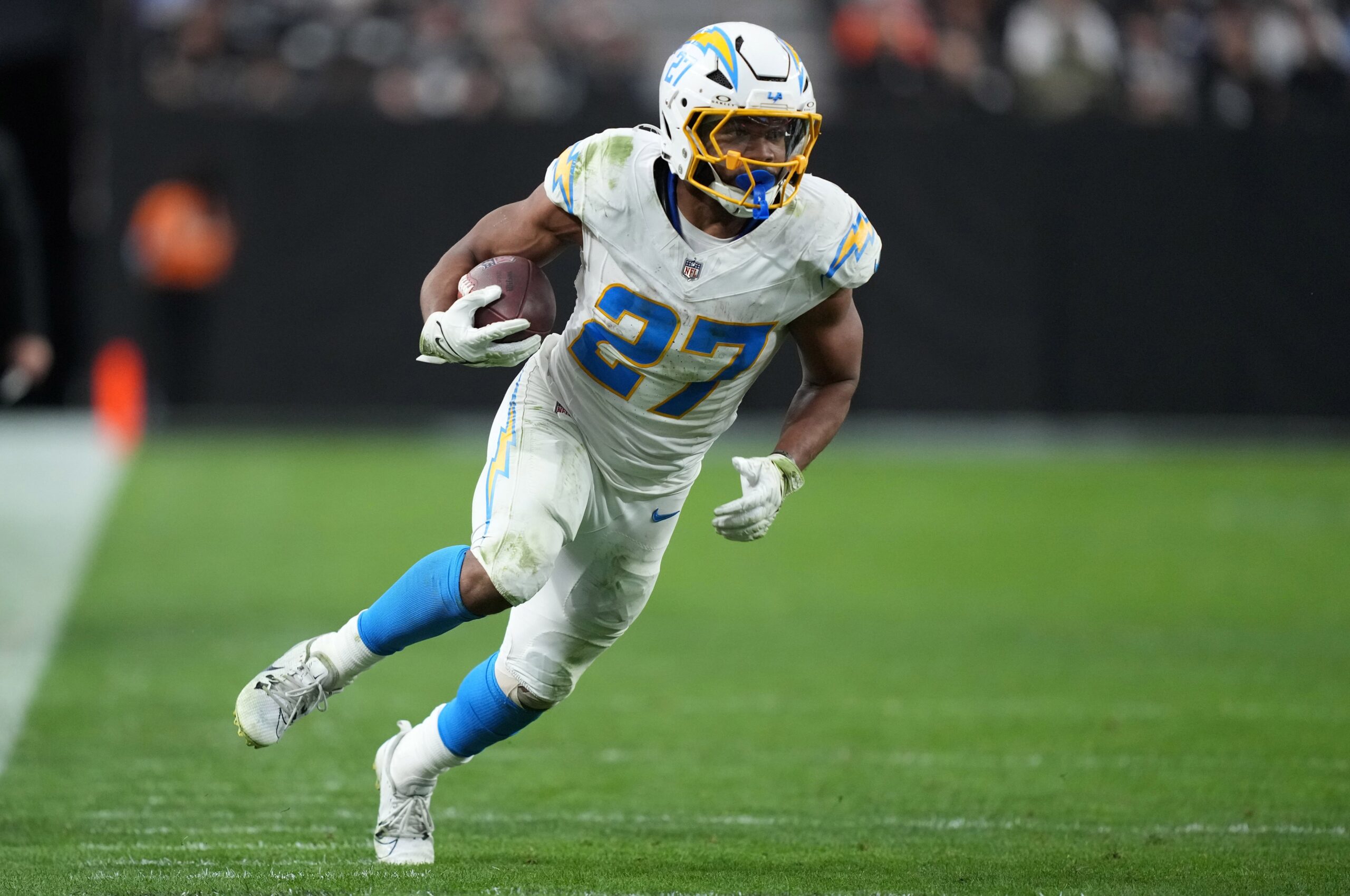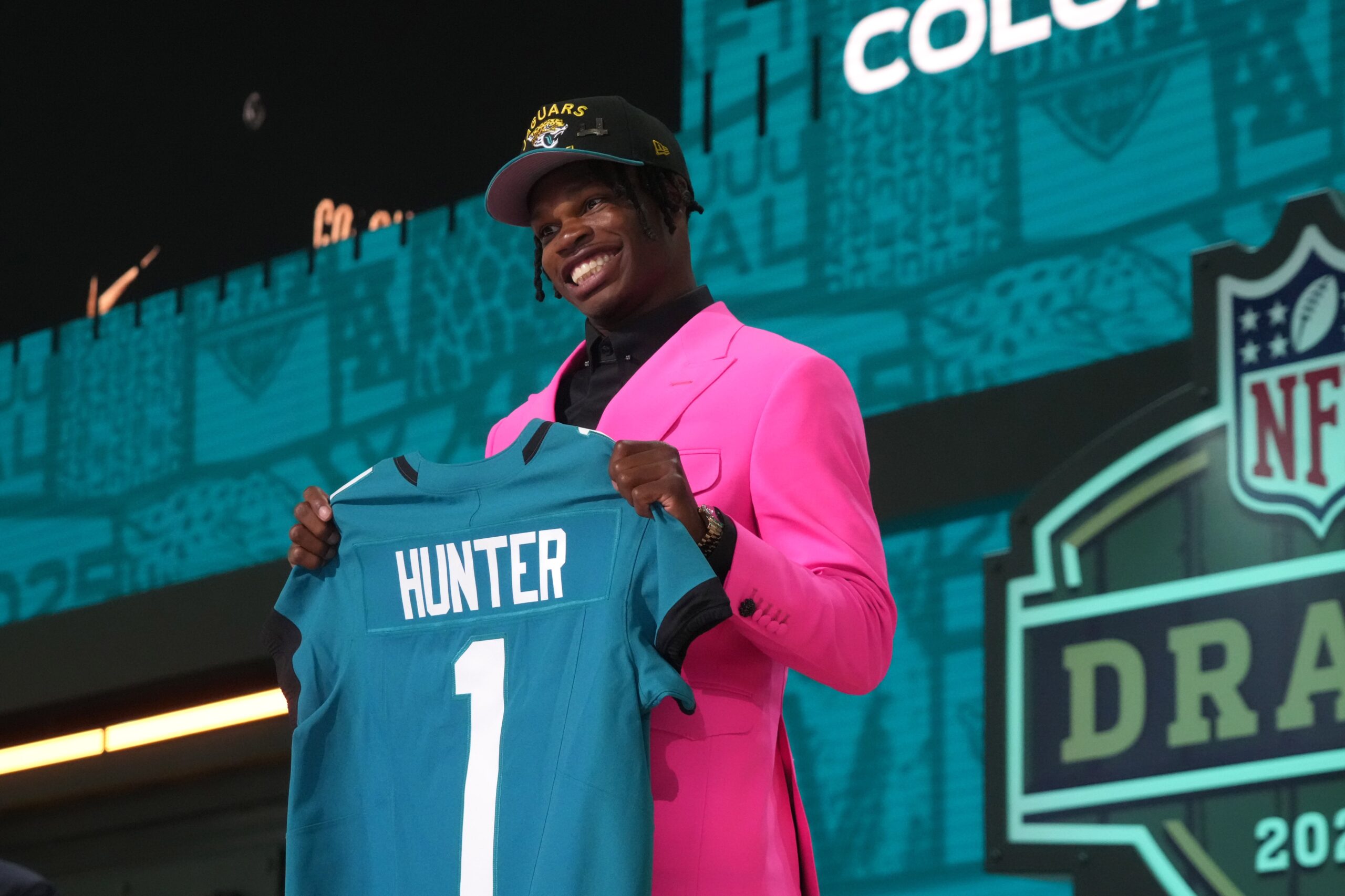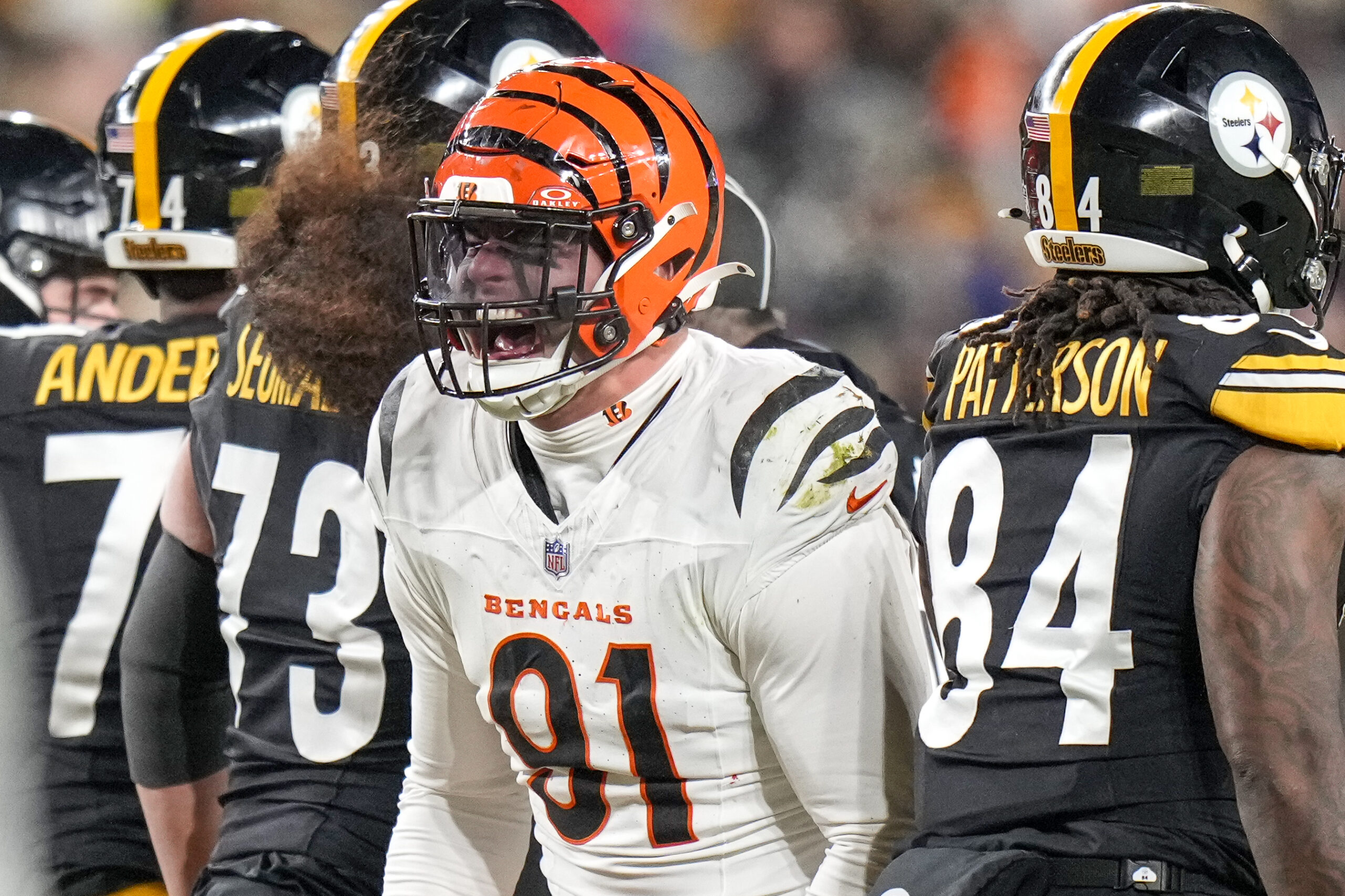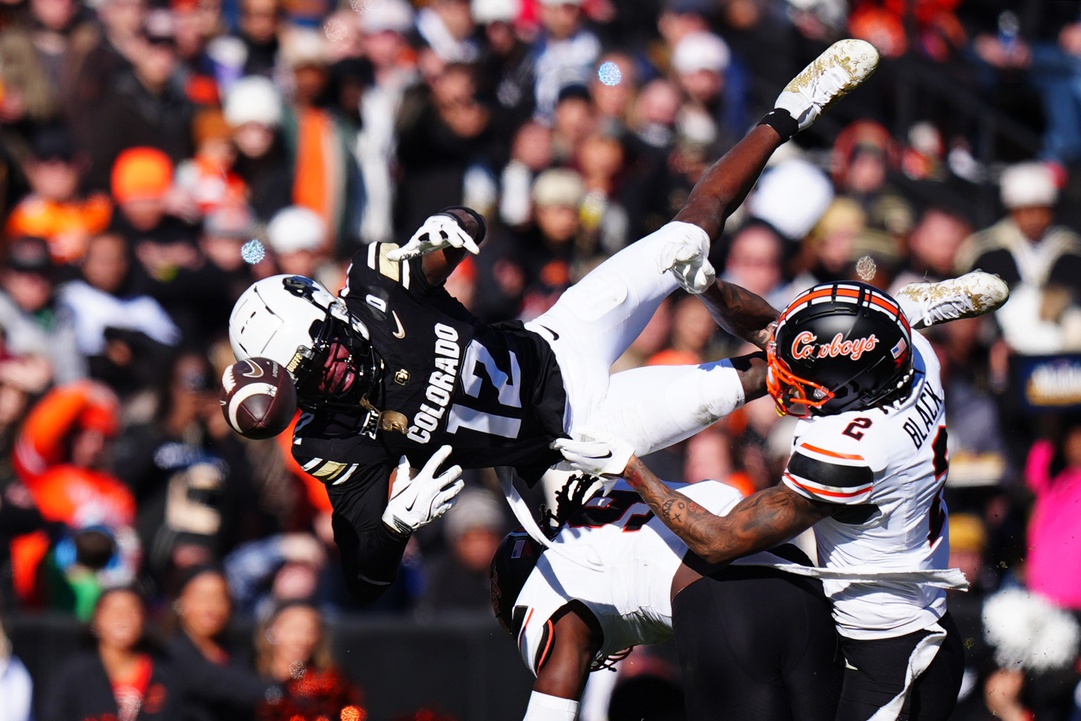NFL Analysis
1/4/24
9 min read
Sean McVay, Rams' Offensive Evolution Makes them Dangerous Playoff Team
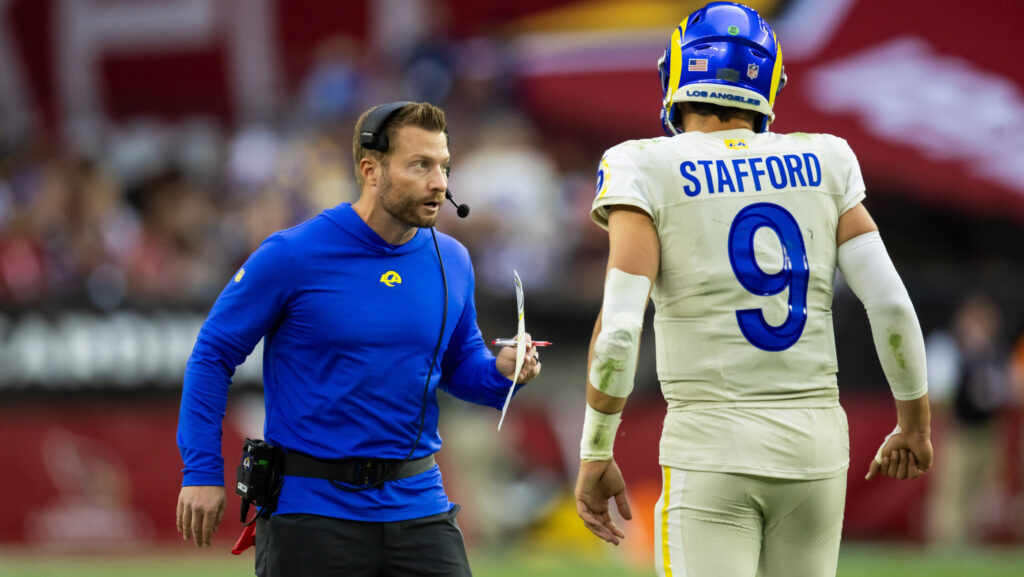
Carson Wentz will be the starting quarterback for the Los Angeles Rams in Week 18. If you had just that fact ahead of the season, you’d probably assume the Rams’ 2023 season went as poorly or worse than 2022.
But the 9-7 Rams clinched a playoff spot and have the luxury of resting starters in the regular season finale.
The 2023 season was not expected to be like this in Los Angeles, especially given how the 2022 went. Injuries and underperformance sent Sean McVay into a soul-searching offseason with his coaching future up in the air.
Even as McVay returned, there was not much hope for a rebound. The Rams’ preseason win total was just 6.5, tied for the second-lowest among all teams. They cleared the over in Week 15, the first game of a three-game win streak.
They are one of the most dangerous wild-card teams heading into the playoffs because of their offensive potential. The Rams enter Week 18 ranked seventh in DVOA and EPA per play.
This type of turnaround might suggest the Rams have found their 2021 groove. This isn’t the offense that won the Super Bowl. It’s grown. It’s evolved and is more well-rounded.
Nacua, Stafford Steer The Ship
There are still some similarities to McVay’s past offenses. The Rams still work to make all of their plays look the same. This is an offense that has leaned even more into using 11 personnel. The Rams have used three wide receivers on a league-leading 94.3 percent of plays this season. In 2021, the Rams led the league at 83.3 percent.
When healthy, those receivers mostly stay the same. It’s Puka Nacua, Cooper Kupp and Tutu Atwell with a little Demarcus Robinson mixed in.
Van Jefferson is seventh among all Rams in routes run this season (including tight ends and running backs), and he has not been with the team since he was sent to the Atlanta Falcons at the trade deadline. Having the same receivers allows the Rams to use the same looks to get to just about everything in their offense.
Nacua’s emergence is one of the most impressive developments from this offense. The fifth-round pick is fourth among all players in receiving yards and seventh in target share. He’s 29 yards away from the all-time rookie receiving record. He’s excelled with and without Kupp on the field.
Nacua, at 6-foot-2, 205 pounds, is the perfect McVay receiver. He’s smooth as a route runner and physical enough to play tight and run block. That versatility from a receiver — in a McVay offense specifically — opens up so many opportunities, and it’s helped the passing game thrive.
Like the 2021 team, the most significant upside comes from Matthew Stafford's high-level play. Stafford is third among quarterbacks in EPA per play, according to TruMedia.
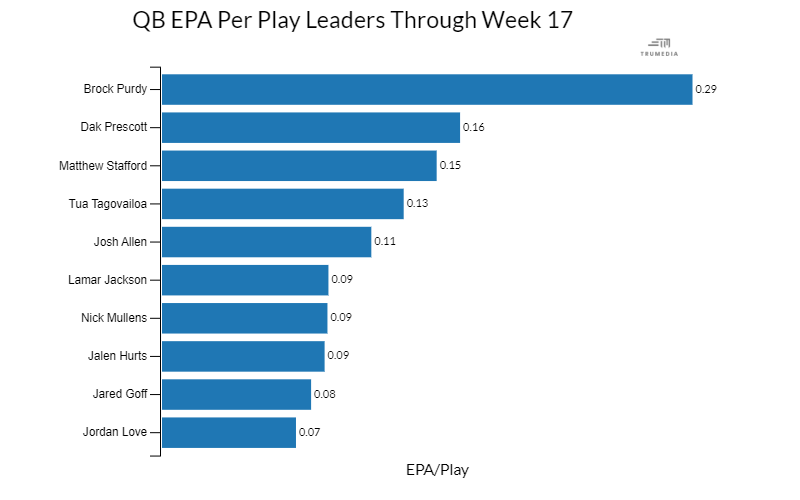
He has the same EPA per play (0.15) as he did during the 2021 season but has done so in an environment where the league has shifted toward defensive success. The average EPA per play among quarterbacks with at least 200 dropbacks in 2021 was 0.02. In 2023, it’s -0.04.
Stafford still can sling the ball and has made some unreal throws, but the structure of the passing game does not solely rely on the quarterback’s play-making ability.
When the Rams went to the Super Bowl, they had the most expansive and explosive empty packages in the league. Stafford used empty 29.4 percent of the time.
That allowed the Rams to get five players spread out in a passing route while Stafford pushed the ball down the field. It was on the quarterback to make a play with his arm. With that setup, no team tested defenses more horizontally and vertically than the 2021 Rams offense.
A Change In Formation
This year, the Rams have only gone empty 11.4 percent of the time, which ranks 21st among all offenses. As a replacement, the Rams have gotten better everywhere else. There’s more variance in how Stafford drops back.
The Rams have gone under center just less than 40 percent of the time this season, and they are one of the league’s best offenses while doing it. They rank fifth in EPA per play and first in EPA per dropback under center.
The under-center offense is devastating because the Rams have killed the play-action game. Stafford is just below the league average in overall play-action rate, but the Rams run play-action on 88 percent of his under-center dropbacks. With a league-average 70-30 run-to-pass ratio under center, defenses can’t focus on a tendency.
This is more difficult for defenses because the Rams’ offense looks the same before the snap. One of the Rams’ most-used looks under center is a pre-snap motion from Nacua.
The Rams will come out in a 2x2 set, and Nacua starts in a condensed split to the tight end side before motioning across the formation to the two-receiver side.
Occasionally, he’ll motion back as the ball is snapped to act as a lead blocker for the Rams’ inside runs. However, when he goes out on a route, the offense shows many different concepts off the same look.
Nacua can run to the flat or run a go. Against the Giants last week, the Rams set up a screen. Everything is on the table.
When Stafford struggled last season, the offense was just stuck. There was no explosion and not much mystery. Defenses dropped an extra defender into the box to remove crossers from Kupp, and if those weren’t working, not much else did. There’s nothing stale this season, and no one thing defenses can try to take away.
Shifting to Pistol
As the season progressed, modifications to the offense continued. From Stafford's acquisition until Week 5 of 2023, the Rams had used zero snaps of pistol.
Since Week 6, the Rams have used it on 12.9 percent of snaps, third in the league in that span. That includes three games of at least 20 percent and 18 percent against the Giants in Week 17.
Using pistol is a way to marry more of Stafford’s straight dropback game from shotgun and the under-center run game. From pistol, both avenues are available.
The dropback game has mostly been quick game for Stafford, with 82 percent of his throws within 2.5 seconds of the snaps, per TruMedia. Still, he’s averaging 0.13 EPA per play with a 57.1 percent success rate.
Meanwhile, the Rams have run 52 times for 310 yards, with 15.4 percent of rushing attempts going 10 or more yards from pistol. It’s a recent changeup, but it works.
Fixing The Running Game
Perhaps the most significant difference for this version of the Rams is the success and deployment of a run game that ranks seventh in EPA per play and fifth in success rate.
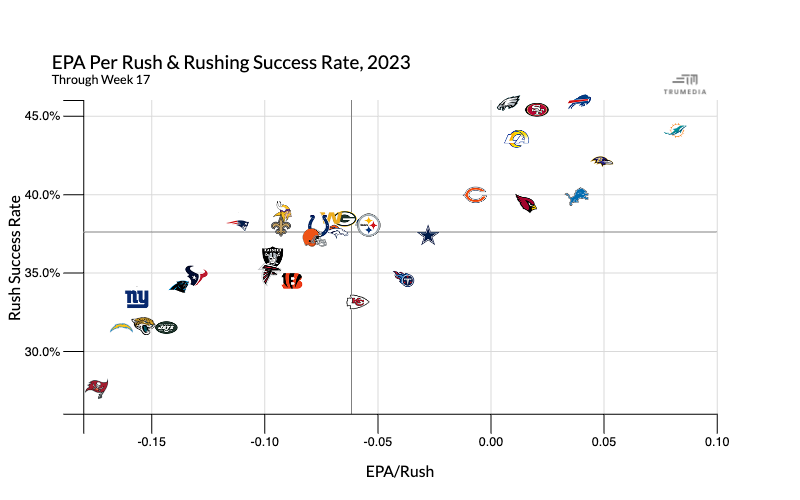
The McVay/Shanahan offenses were initially built around the wide zone, using those outside runs to build the play-action game. Kyle Shanahan has moved away from that, and McVay made a hard pivot this season to more gap schemes and runs up the middle.
Yet, there are still shades of the original McVay philosophy as the personnel and motion allow the Rams to run into some of the lightest boxes in the league. For the Rams, 38.5 percent of their rushing attempts have been into a box of six defenders or fewer, the fifth-lowest rate in the league.
This marriage of the old and new has allowed the running game to work. This year, 56 percent of the Rams’ runs have been between the guards, per FTN. That rate was 45 percent in 2021. Not only are the Rams going there more often, but they’re first in adjusted line yards on those carries.
A switch to the gap scheme with an emphasis on running duo (a power scheme with no pullers that emphasizes double teams at the point of attack) has aided the Rams’ offensive line by creating contact quickly instead of using horizontal movement and asking the offensive linemen to reach the second level often.
This vertical run game gives Kyren Williams more choices and control for which gaps to hit when he gets to the line. Despite an offensive line that’s been about average in run block win rate (15th per ESPN), the Rams rank 11th in yards before contact per rush.
Any runway for Williams, the 2022 fifth-round pick from Notre Dame, is a plus because he can be a wrecking ball running through contact. Among backs with at least 100 rushes, Williams ranks fifth in yards after contact per rush.
Williams is first in EPA per rush and success rate among those backs with at least 100 carries. He’s taking advantage of the space provided. He’s faced the highest percentage of rushes into boxes of six defenders or fewer. The Rams have chosen to run straight into those light boxes.
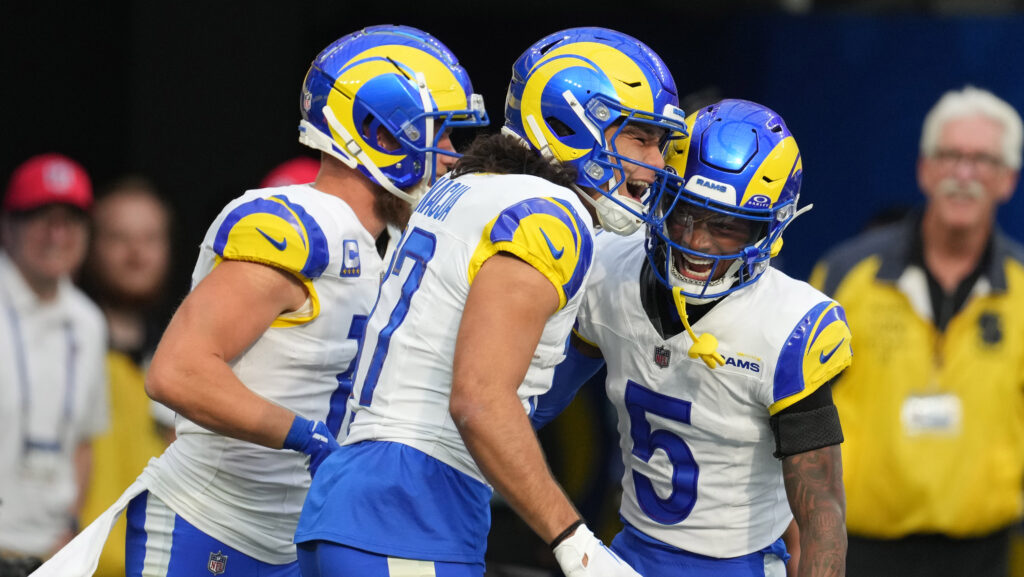
Rams Are Set Up For The Future
The overarching idea for a McVay offense is that everything works together. There might have been better offenses statistically during McVay’s tenure, but there might not be an offense that better reflects that philosophy than this current version.
The scheme is great. Their quarterback can take over a game. The receivers are exceptional, and the run game is a positive in multiple ways.
It wouldn’t be a surprise if the Rams stole a game in the playoffs. Some defenses in the NFC would struggle to contain this offense. But that isn’t the most important thing here.
The 2023 season is already a resounding success for this team, and now the future looks brighter after so much unknown in the offseason. McVay did not just come back; he came back better.
That’s scary for the NFC teams in the playoffs and for teams that will have to defend against this team in the future.


